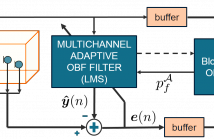ICASSP is the world's largest and most comprehensive technical conference on signal processing and its applications. It provides a fantastic networking opportunity for like-minded professionals from around the world. ICASSP 2016 conference will feature world-class presentations by internationally renowned speakers and cutting-edge session topics.
- Read more about poster_STEGANALYSIS OF AAC USINGCALIBRATED MARKOV MODEL OF ADJACENT CODEBOOK
- Log in to post comments
- Categories:
 7 Views
7 Views- Read more about poster_STEGANALYSIS OF AAC USINGCALIBRATED MARKOV MODEL OF ADJACENT CODEBOOK
- Log in to post comments
- Categories:
 3 Views
3 Views- Read more about Non-linear regression for bivariate self-similarity identification - application to anomaly detection in Internet traffic based on a joint scaling analysis of packet and byte counts
- Log in to post comments
Internet traffic monitoring is a crucial task for network security. Self-similarity, a key property for a relevant description of internet traffic statistics, has already been massively and successfully involved in anomaly detection. Self-similar analysis was however so far applied either to byte or Packet count time series independently, while both signals are jointly collected and technically deeply related. The present contribution elaborates on a recently proposed multivariate self-similar model, Operator fractional Brownian Motion (OfBm), to
- Categories:
 11 Views
11 Views- Read more about System Combination with Log-linear Models
- Log in to post comments
Improved speech recognition performance can often be obtained by combining multiple systems
together. Joint decoding, where scores from multiple systems are combined during decoding rather
than combining hypotheses, is one efficient approach for system combination. In standard joint
decoding the frame log-likelihoods from each system are used as the scores. These scores are then
weighted and summed to yield the final score for a frame. The system combination weights for this
poster.pdf
- Categories:
 14 Views
14 Views- Read more about Fast Keypoint Detection in Video Sequences
- Log in to post comments
Several computer vision tasks exploit a succinct representation of the visual content in the form of sets of local features. Given an input image, feature extraction algorithms identify key-points and assign to each of them a descriptor, based on the characteristics of the surrounding visual content. Several tasks might require local features to be extracted from a video sequence, on a frame-by-frame basis.
- Categories:
 18 Views
18 ViewsWe present a novel method to hierarchically cluster networked data allowing nodes to simultaneously belong to multiple clusters. Given a network, our method outputs a cut metric on the underlying node set, which can be related to data coverings at different resolutions. The cut metric is obtained by averaging a set of ultrametrics, which are themselves the output of (non-overlapping) hierarchically clustering noisy versions of the original network of interest. The resulting algorithm is illustrated in synthetic networks and is used to classify handwritten digits from the MNIST database.
- Categories:
 13 Views
13 Views- Read more about Accelerated Spectral Clustering Using Graph Filtering of Random Signals
- Log in to post comments
- Categories:
 12 Views
12 Views- Read more about LCMV Beamforming with Subspace Projection for Multi-Speaker Speech Enhancement
- Log in to post comments
ICASSP_D3.pdf
- Categories:
 8 Views
8 Views